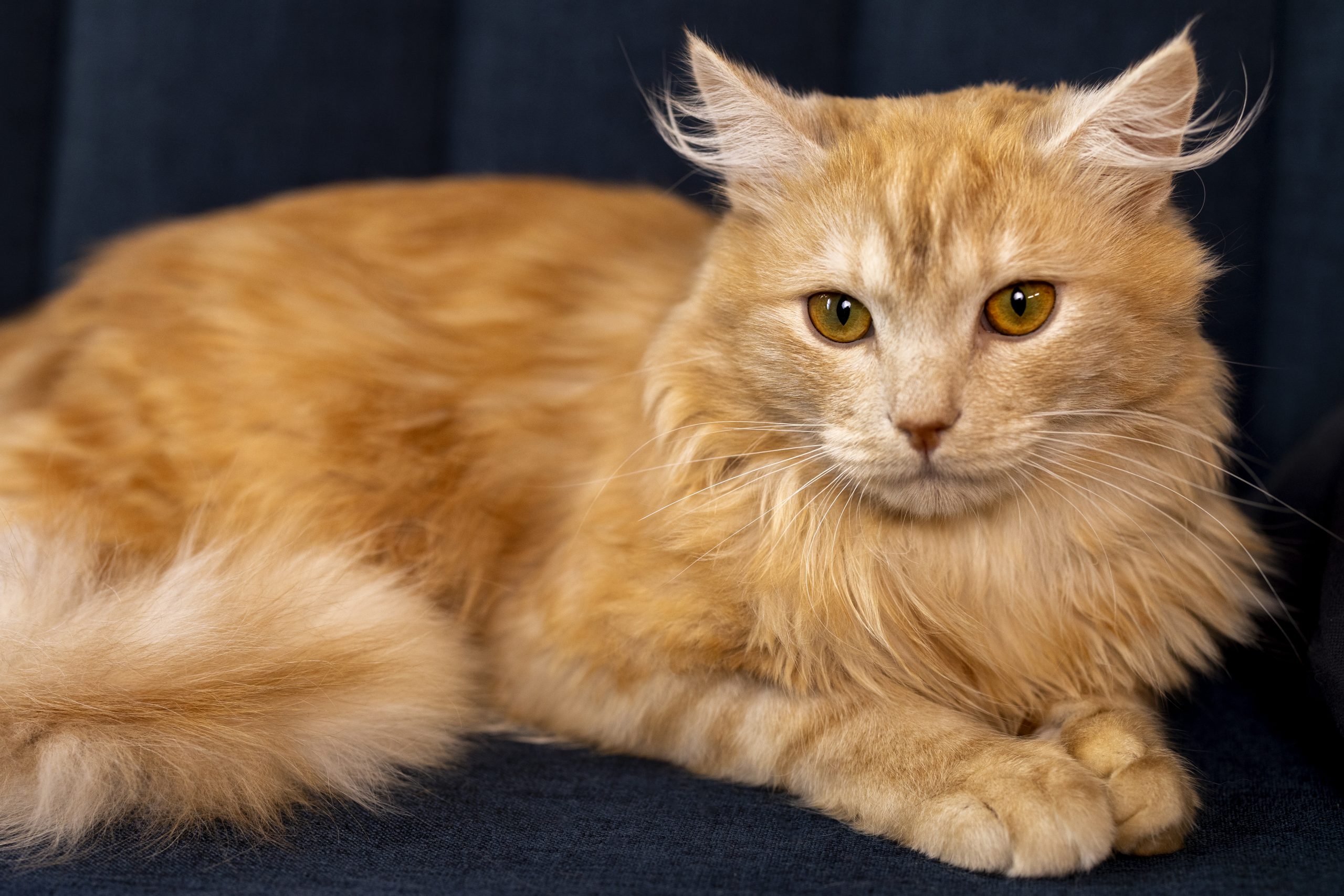Cat Asthma [Signs, Symptoms, Causes, Treatment & More]

Understanding Cat Asthma
Like humans, cats can suffer from asthma. Feline asthma is a chronic respiratory disorder that affects the airways, causing inflammation and narrowing of the bronchioles. This can lead to difficulty breathing, wheezing, and other respiratory distress for our feline companions. Understanding cat asthma’s signs, causes, and treatment options is crucial for providing the best possible care for your furry friend.
Asthma in cats is a relatively common condition, affecting an estimated 1-5% of the feline population. While the exact causes are not fully understood, it is believed that a combination of environmental factors, genetic predisposition, and underlying allergies or sensitivities can contribute to the development of this condition.
Identifying Signs of Asthma in Your Cat
Cats with asthma may exhibit a variety of symptoms, including:
- Wheezing or whistling sounds when breathing
- Coughing, especially after exercise or excitement
- Rapid or labored breathing
- Open-mouthed breathing
- Lethargy and decreased activity levels
- Loss of appetite
- Weight loss
It’s important to note that these symptoms can also be indicative of other respiratory conditions, so it’s crucial to have your cat examined by a veterinarian for an accurate diagnosis.
Diagnosing Cat Asthma: How is it diagnosed by a veterinarian?
Diagnosing cat asthma typically involves a combination of physical examination, medical history, and diagnostic tests. Here’s a more detailed look at the diagnostic process:
Physical Examination: Your veterinarian will thoroughly examine your cat, listening to its breathing, observing any signs of respiratory distress, and palpating the chest and abdomen.
Medical History: Your veterinarian will ask about your cat’s medical history, including any previous respiratory issues, allergies, or other relevant information.
To confirm the diagnosis of asthma, your veterinarian may recommend one or more of the following diagnostic tests:
- Chest X-rays can help identify any structural abnormalities or inflammation in the lungs.
- Bronchoscopy: This procedure involves the use of a small camera to examine the airways and collect samples for further analysis.
- Allergy testing: Your veterinarian may recommend allergy testing to identify any environmental triggers that may be contributing to your cat’s asthma.
- Blood tests can help rule out other underlying medical conditions and provide additional information about your cat’s overall health.
Once the diagnosis of asthma is confirmed, your veterinarian will work with you to develop a comprehensive treatment plan to manage your cat’s condition effectively.
Symptoms of a Cat Asthma Attack
During an asthma attack, cats may exhibit the following symptoms:
- Rapid, shallow breathing
- Wheezing or whistling sounds when breathing
- Coughing or hacking
- Distress or anxiety
- Reluctance to move or exercise
- Open-mouthed breathing
- Bluish tint to the gums or tongue (a sign of oxygen deprivation)
These symptoms can range in severity, and it’s important to recognize them early and seek immediate veterinary care to prevent the condition from worsening.
Determining the Life Expectancy of Cats with Asthma
The life expectancy of cats with asthma can vary depending on the severity of the condition, the effectiveness of treatment, and the cat’s overall health. With proper management and treatment, many cats with asthma can live relatively normal, healthy lives.
In general, cats with well-controlled asthma may have a life expectancy similar to that of healthy cats, which is typically around 12-18 years. However, cats with severe or uncontrolled asthma may have a shorter lifespan, as the condition can lead to complications and a decreased quality of life.
It’s important to work closely with your veterinarian to develop a comprehensive management plan and closely monitor your cat’s condition to ensure the best possible outcome.
Causes of Cat Asthma
The exact causes of feline asthma are not fully understood, but several factors are believed to contribute to the development of the condition:
Allergies and Sensitivities: Cats can develop allergic reactions to various environmental triggers, such as dust, pollen, mold, or household chemicals, which can lead to airway inflammation and asthma.
Genetic Predisposition: Some cats may be genetically predisposed to developing asthma, with certain breeds, such as Siamese and Himalayan cats, being more susceptible.
Respiratory Infections: Viral or bacterial respiratory infections can cause inflammation and damage to the airways, increasing the risk of developing asthma.
Exposure to Irritants: Exposure to cigarette smoke, household cleaners, or other airborne pollutants can irritate a cat’s respiratory system and contribute to the development of asthma.
Obesity: Excess weight can put additional strain on a cat’s respiratory system, potentially exacerbating asthma symptoms.
Understanding the potential causes of feline asthma can help pet owners take proactive steps to minimize their cat’s exposure to known triggers and maintain a healthy environment.
Cat Asthma Treatment Options
Once your cat has been diagnosed with asthma, your veterinarian will work with you to develop a comprehensive treatment plan to manage the condition effectively. The primary goals of asthma treatment in cats are to reduce inflammation, open the airways, and prevent or minimize the frequency and severity of asthma attacks. The most common treatment options for cat asthma include:
Corticosteroids
Corticosteroids, such as prednisone or prednisolone, are the primary medication used to manage feline asthma. These drugs work by reducing inflammation in the airways, making it easier for your cat to breathe. Corticosteroids may be prescribed in the form of oral tablets, liquid medications, or inhalation therapies, depending on the severity of your cat’s condition.
Bronchodilators
Bronchodilators, such as albuterol or terbutaline, help relax and open the airways, allowing for easier breathing during an asthma attack. These medications are often used in conjunction with corticosteroids to provide rapid relief and long-term management of asthma symptoms.
Environmental Management
In addition to medication, it’s important to manage your cat’s environment to minimize exposure to potential asthma triggers. This may include:
- Reducing household dust, dander, and other allergens
- Avoiding the use of strong household cleaners, scented products, or other irritants
- Ensuring proper ventilation and air filtration in your home
- Maintaining a clean, low-stress environment for your cat
Supplemental Oxygen
In severe cases of asthma, your veterinarian may recommend the use of supplemental oxygen to help your cat breathe more easily during an attack.
Monitoring and Adjusting Treatment
Your veterinarian will closely monitor your cat’s response to treatment and may need to adjust the medication dosage or type over time to ensure optimal management of the condition. Regular check-ups and follow-up care are essential for ensuring the best possible outcome for your feline friend.
Knowing When to Seek Veterinary Care for Your Cat
If you suspect your cat is experiencing an asthma attack or exhibiting any of the symptoms mentioned earlier, seeking immediate veterinary care is crucial. Asthma attacks can be life-threatening, and prompt medical intervention is essential to prevent complications and ensure your cat’s well-being.
Additionally, you should schedule a veterinary appointment if you notice any of the following:
- Persistent coughing or wheezing
- Labored or rapid breathing
- Lethargy or decreased activity levels
- Loss of appetite or weight loss
Any other changes in your cat’s respiratory health or overall behavior
Early detection and treatment of feline asthma can significantly improve your cat’s quality of life and long-term prognosis. By working closely with your veterinarian and implementing the appropriate management strategies, you can help your furry friend live a happy, healthy life despite the challenges of this chronic respiratory condition.
Can Odie Pet Insurance Provide Coverage for Such an Investment?
Depending on the specific policy, pet insurance can cover the diagnosis, treatment, and management of asthma in cats.
Reimbursement
This method is the most common for pet insurance companies. You pay out of pocket for the veterinarian bill, and then the insurance company reimburses you for what’s covered under the insurance plan. The steps look like this.
- You pay the vet bill after your cat’s visit.
- You fill out the pet insurance claim form.
- Submit the claim form and other required documentation to the insurer.
- After the claim is approved, you will be reimbursed for eligible expenses.
What Does Odie Pet Insurance Cover?
Pet insurance covers various veterinary expenses, providing financial protection and peace of mind for pet owners. Here are the details of the coverage options offered by Odie Pet Insurance:
Illness & Injury Plan
The Illness & Injury Plan is an all-inclusive insurance plan designed to cover a wide range of medical needs for your pet. This plan includes comprehensive coverage for various illnesses, injuries, and veterinary services. Some of the covered items include:
- Veterinary exams and consultations
- Diagnostics (e.g., X-rays, lab tests)
- Prescribed medications
- Surgeries and hospitalization
- Rehabilitation, acupuncture, or chiropractic treatments
- Medically necessary supplies
- Euthanasia and cremation
The Wellness Plan
The Wellness Plan is a monthly membership that focuses on preventive care and covers routine veterinary services.
- Provides reimbursements for routine care items such as wellness visits (exams and vaccines), testing and parasite prevention, dental cleanings and at-home dental care, vitamins, supplements, and more.
- Through Odie’s partnership with Petivity, a leader in smart pet products and proactive care, Wellness Plan members can also receive reimbursements for Petivity devices and health kits, as well as eligible Purina food and supplements.
- Total reimbursement up to $700 per year.




